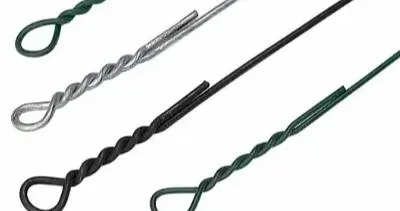-
 Phone:
Phone: -
 Email:
Email:

Effective Solutions for Chain Link Fence Restoration and Maintenance
Chain Link Fence Repair A Comprehensive Guide
Chain link fences are a popular choice for both residential and commercial properties. They offer security, visibility, and cost-effectiveness. However, like any other fencing material, they can suffer from wear and tear due to various factors such as weather conditions, accidents, or simple aging. Repairing a chain link fence is often a manageable task that homeowners can do themselves, saving money on professional services. In this article, we will discuss common issues with chain link fences and provide a step-by-step guide on how to repair them.
Common Problems with Chain Link Fences
1. Rust and Corrosion Over time, chain link fences can develop rust, especially in areas with high moisture. This can weaken the fence and reduce its lifespan.
2. Bent or Damaged Posts Heavy winds, fallen branches, or collisions with vehicles can bend or damage the posts that support the fence.
3. Loose or Missing Tension Wire The tension wire at the base of the fence helps maintain its structure. If it becomes loose or is missing, the integrity of the fence may be compromised.
4. Torn or Damaged Fabric The chain link fabric itself can become torn due to impacts or wear and tear, requiring repairs or replacement.
Tools and Materials Needed
Before beginning your repair, gather the following tools and materials
- Replacement chain link fabric (if needed) - Wire cutters - Pliers - A pair of gloves - A level - Tension wire - Tension bands - New posts or post tops (if necessary) - Concrete mix (if re-setting posts)
chain link fence repair

Step-by-Step Repair Process
1. Assess the Damage Examine the entire length of the fence to identify problems. Take note of any rust spots, damaged posts, torn fabric, or loose wires.
2. Repairing Rust If you find areas of rust, you can often remove it by scrubbing with a wire brush. Afterward, apply a rust-inhibiting primer and paint to prevent further corrosion.
3. Replacing Damaged Fabric If there are areas where the chain link fabric is torn or excessively rusted, you may need to replace sections - First, cut the damaged fabric out using wire cutters. - Measure the length of the section to be replaced and cut a new piece of chain link fabric. - Attach the new fabric to the existing posts with tension bands and secure them tightly.
4. Fixing Bent or Damaged Posts If a post is bent, it may be possible to straighten it by pushing it back into position. However, if it is severely damaged - Remove the post from the ground using a post puller if necessary. - Set the new or repaired post in the desired position and fill the hole with concrete to secure it.
5. Re-attach Loose Tension Wire If the tension wire is loose, re-tighten it by using pliers to secure it back to the existing posts. If the wire is missing, install a new tension wire running along the bottom of the fence and attach it to the posts.
6. Final Touches Once all repairs are complete, check the entire fence with a level to ensure it is straight and even. Make any necessary adjustments.
Conclusion
Repairing a chain link fence can seem daunting, but with the right tools and a clear plan, many common issues can be tackled by homeowners themselves. Regular maintenance and timely repairs can prolong the life of your fence and keep your property secure. Remember that, while minor repairs can often be done independently, it’s essential to call a professional for extensive damage or structural issues that you may not feel comfortable handling on your own. By staying proactive about your chain link fence’s condition, you’ll ensure it continues to serve its purpose effectively for many years.
-
Wire Mesh for Every Need: A Practical SolutionNewsJul.25,2025
-
Steel Fences: Durable, Secure, and Stylish OptionsNewsJul.25,2025
-
Roll Top Fencing: A Smart Solution for Safety and SecurityNewsJul.25,2025
-
Cattle Farm Fencing Solutions for Maximum SecurityNewsJul.25,2025
-
Affordable Iron Binding Wire SolutionsNewsJul.25,2025
-
Affordable Galvanized Wire SolutionsNewsJul.25,2025
-
Wire Hanger Recycling IdeasNewsJul.25,2025








